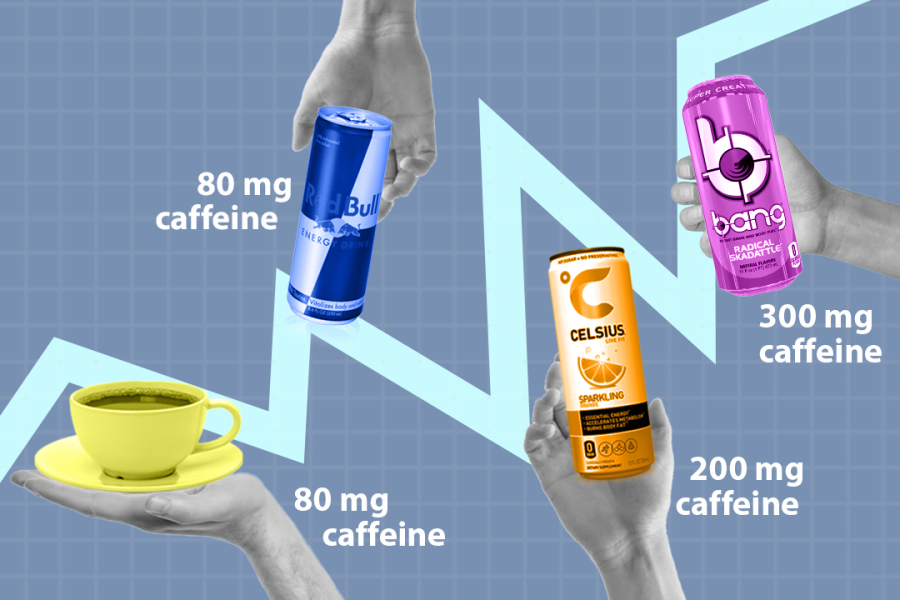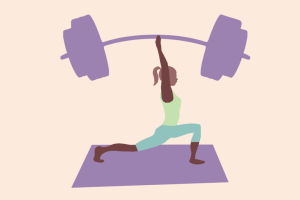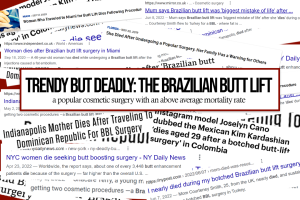Monsters, Celsius, Bangs — Oh My!
A brief review of caffeinated barrage and their varying effects on the human body
March 7, 2023
Consuming caffeine is practically a right of passage in college. Vending machines are always stocked with Monster Energy Drinks, Yerba Mates, and canned Starbucks drinks such as espressos and frappuccinos. Argo Tea — with its wide selection of caffeinated beverages — is a popular spot for Fordham Lincoln Center students to meet up or study. Even in the library, it’s rare to see a table without a cup of coffee or other caffeinated drink. But, as midterms approach, perhaps you’re reconsidering that extra kick during crunch time.
I’m not here to rail against caffeine consumption or shame those who drink copious amounts of it; I’m an avid fan of Monster Rehabs and Celsius drinks myself. It’s rare to see me in class without a Starbucks shaken espresso or cold brew in hand. Additionally, caffeine has been shown to decrease anxiety, boost pleasant moods, increase the brain’s processing speed, and improve long- and short-term memory in adults.
It took me a while to learn how to put into place healthy boundaries for caffeine consumption and decide which products I felt comfortable drinking. Hopefully, this article will serve as a guide of sorts to help you figure out how you want to take your daily caffeine.
Conscious Consumption
Knowing how much caffeine is in the drink you’re consuming is important. The Food and Drug Administration (FDA) advises that adults can safely consume up to 400 mg of caffeine per day, which is equivalent to about four cups of black coffee or two energy drinks.
Excessive caffeine consumption can lead to jitteriness, trouble concentrating, an accelerated heart rate, trouble sleeping, anxiety, nausea and headaches. Some people experience these symptoms at lower levels of caffeine intake because they’re more sensitive to caffeine, so make sure you’re listening to your body and paying attention to the effects of caffeine on it.
When it comes to ascertaining how much caffeine a beverage has, don’t judge a drink by its packaging: Bangs, Celsius and even Monsters feature fun, playful branding but pack a serious punch when it comes to the amount of caffeine in them. Bang energy drinks have 300 mg of caffeine in a single can, which is already fairly close to the FDA’s recommended upper limit.
Celsius, although promoted as a health-conscious energy boost, has a whopping 200 mg of caffeine per can. Monster energy drinks and Starbucks’ recently released Baya energy line both have about 150 mg of caffeine per can. Guayakí’s Yerba Mate canned beverages have anywhere from 80-150 mg of caffeine, depending on which type you choose.
If you want to avoid the heavy hitters but still enjoy a non-coffee energy drink, Red Bull is a good candidate. Red Bull has a manageable 80 mg of caffeine. Or, if you’re a fan of a regular 8oz cup of joe, that has about 80-100 mg of caffeine per serving.
Starbucks canned and barista-prepared drinks run the gamut, but most have caffeine in the 80-225 mg range. A medium, or grande, iced latte (two shots of espresso) has about 150 mg of caffeine, and an iced shaken espresso (three shots of espresso) has about 225 mg of caffeine. In addition, a cold brew has about 205 mg of caffeine while a canned double-shot espresso has around 120 mg of caffeine. Most bottled frappuccinos have between 75 mg and 110 mg of caffeine.
Tracking caffeine intake can be as simple as noting the amount on the side of a can or near the nutritional label — or, for those handcrafted beverages, doing a quick Google search to find the online nutritional label (often underneath the drink on the Starbucks website or app).
Reading Beyond the Labels
While it is important to calculate your caffeine intake, taking careful notice of the other ingredients you’re consuming is crucial to your health. Energy drinks often have a ton of added sugars, which can boost your energy but also contribute to serious withdrawal effects after the caffeine high. Even energy drinks that are sugar-free or boast low calorie counts, like several types of Monster drinks and Bangs, can have negative effects on your health, particularly your metabolism and gut biome.
There is also currently not a lot of conclusive research on the potential benefits or risks of consuming large amounts of vitamins and other substances in energy drinks. Although this is not a reason in and of itself to stop drinking energy drinks, it is worth keeping in mind as you make decisions about what to put in your body.
Even when a drink is advertised as healthy, that may not always be the case. For example, Celsius recently came under fire for misleading consumers about its ingredients. Celsius claims to have “no preservatives,” but citric acid, common in canned beverages, is one of the drink’s ingredients. Although the company claims that citric acid is used for flavor, not preserving, they still recently settled in a major class action case about the misleading label.
Although it doesn’t really matter at the end of the day whether Celsius uses citric acid as a preservative or a flavor, it still serves as an important reason to not always trust the packaging and to thoroughly research what you drink.
Knowing When To Tap the Brakes
Drinking caffeine is likely a natural part of your day or an essential fixture of your routine. I know getting through my day would be a whole lot harder without the joy from sipping on an iced latte or the extra little boost for my motivation when finishing up some homework. But I entreat you to do so with great attention to your health and moods while consuming.
When my friend bought new coffee grounds at Target — always one for irony, she was intrigued by the promise of the strong black brew advertised by Death Wish Coffee Co — she didn’t expect it to come with a side of excessive caffeine intake symptoms.
A regular enjoyer of a pot of black coffee and Monsters, she is no stranger to large amounts of caffeine. Possibly misled by the near-hyperbolic jests on the coffee bag, she decided to give “the world’s strongest coffee” a shot. She later found out that she had been consuming nearly 900 mg of coffee when she used the grounds for her usual pot of coffee.
Death Wish Coffee Co didn’t list the amount of caffeine anywhere on the bag — nor did it provide the helpful statistic that a cup of coffee made with its grounds has nearly 500% more caffeine than the average cup of coffee.
Although this is the cautionary tale to end all tales, you shouldn’t feel scared away from caffeine entirely. It can make an enormous positive impact on your life, especially as a student. However, you should bear in mind the dangers and effects caffeine can have on your health and well-being. So, please do enjoy your Monsters and shaken espressos — responsibly, of course.

















Erick Gonzalo • Mar 14, 2023 at 6:57 am
So you are telling me that you would rather have caffeine and sugar from a redbull or a celcius with their copious amount of citric acid that caffeine and creatine with zero from bang?